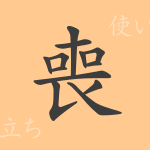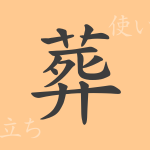In the rich tapestry of Japanese written culture, each Kanji character carries a unique history and meaning. The Kanji “痩” (そう, sō) may not be frequently encountered in daily life, yet it plays a significant role in contexts related to beauty and health. This article delves into the origins, meanings, applications, readings, and the phrases associated with “痩,” unraveling its full spectrum of usage.
Origins of 痩 (そう – Sō)
The Kanji “痩” originated from ancient Chinese script, where it was depicted to symbolize the emaciation due to illness. It combines the radical for “illness” (病) with “少” (しょう, shō), representing reduction or decrease. Over time, its use expanded beyond illness to denote general slimming or decrease, commonly applied in modern contexts.
Meaning and Usage of 痩 (そう – Sō)
“痩” conveys meanings such as “to slim down” or “to decrease.” It is particularly used in contexts related to weight loss or fat reduction, often appearing in discussions about health and dieting. In economic terms, it can also imply a reduction or decrease.
Readings, Stroke Count, and Radical of 痩 (そう – Sō)
The Kanji “痩” is a fundamental character in Japanese, offering insights into its linguistic structure:
- Readings: On’yomi (音読み) “ソウ” (Sō), Kun’yomi (訓読み) “やせる” (yaseru)
- Stroke Count: “痩” consists of 12 strokes.
- Radical: The radical is 疔 (やまいだれ – yamaidare), related to disease.
Phrases and Idioms Using 痩 (そう – Sō) and Their Meanings
The character “痩” features in several idioms and phrases that exemplify its meaning more concretely. For instance:
- 痩身 (そうしん – sōshin): Refers to slimming or weight loss.
- 痩躯 (そうく – sōku): Describes a slim body.
- These terms are frequently used in the beauty industry and health-related topics. Additionally, the proverb “痩せるが勝ち” (yaseru ga kachi) reflects a cultural appreciation for slimness, suggesting that being slim is considered desirable.
Conclusion on 痩 (そう – Sō)
While “痩” is not among the most frequently used Kanji, it represents significant concepts related to body image and health. It is intricately linked to Japanese aesthetics and health perceptions, commonly seen in discussions about slimming and dieting. Moreover, it is used to express economic reductions, demonstrating its versatility. This Kanji’s seemingly simple appearance belies a rich history and cultural depth that continue to influence contemporary Japanese language and society.

























